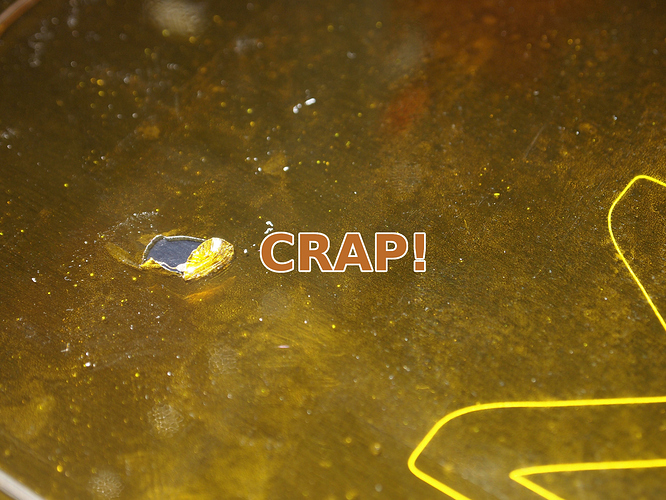Anyone have really good tips for getting stuff off Kapton? Oh, and does anyone have a good source for really wide tape? (>=220mm)?
I find the super-wide stuff is more trouble than it’s worth. Keeping air bubbles out gets more difficult as the tape gets larger, and there’s more to replace when you inevitably nick it while removing something. 2"/50mm seems to be about the optimum width, and thicker tape will also go on smoother (resists the bending that allows bubbles to form) and is obviously more resistant to tearing.
what we need is someone to start making the stuff with tiny holes in it.
one thing I messed with which was somewhat successful was applying blue tape to OHP film, lightly spraying the bed with water, putting the film on the bed and using clips. the surface friction of the water stopped the film coming off the bed and the clips stopped it moving around. worked fairly well from memory. but applying the blue tape to the OHP was a pain.
TLDR: what if we got non sticky Kapton and just sprayed the bed with water and clips?
To get prints unstuck from the Kapton, I use pliers and grab onto the print, then pull or lever it off. 2mm glass will likely break in the process, so I’ve switched to 3mm.
I ordered myself some copper clad kapton (basically the base material for flex PCBs) and will experiment with that. I also have some 3M DP760 epoxy that i’ll probably use to bond the copper side to a piece of glass or aluminum.
@Whosa_whatsis any sources for “thicker” tape? All I can find at a decent price has either no thickness given or say 0.06mm (=2.3mil), but I don’t have a reference to decide if that’s actually thicker than the standard quality.
@Jonathan_se5a_Sorens i don’t think the water’s surface tension will be enough to hold the film down.
On a related note, water boils at 100C while a heated bed for ABS typically runs at 120C 
I actually apply the sticky kapton with soap and water, and squeegee most of the bubbles out that way. See: http://www.youtube.com/watch?v=A6y8St1q2LM
Still waiting for my small cork blocks, and it’ll work even better. The wide stuff lets me start a first layer closer to the bed, and no seams for what I’m doing, which is currently very important.
It looks like McMaster sells wide sheets with both adhesive and non-adhesive, up to 3 mil, but crazy expensive.
@Thomas_Sanladerer here’s the only place to find really thick Kapton: http://www.mcmaster.com/#catalog/119/3603/=l801eb (scroll down a bit). They have both adhesive and non-adhesive and other variants, up to 5mil thickness.
Tell me more about the copper clad kapton - that sounds like a really great solution. Link?
I did a Google search on copper clad kapton and found these folks - worst website ever, but perhaps worth a call. http://www.complast.com/kapton/index.htm
@MakeIt this is what I bought: http://pages.ebay.com/link/?nav=item.view&id=181068161700
I found it on eBay when I was looking for plain kapton sheet. But as it turns out, even the strongest epoxy doesn’t bond smooth kapton well, but it does bond copper, so the copper clad should work well.
The seller is from the Czech Republic, which is right next door to Bavaria, so shipping isn’t a big deal for me. McMaster might turn into USPS hell, though.
Here’s another idea: i know @Makible makes their hotend heater from this flex PCB. We could fabricate the heated bed in the same fashion, bond the flex PCB onto a glass sheet and print onto the back of that. Any thoughts?
As @MakeIt suggested, I use 130mm wide kapton from protoparadigm using the water and soap method and it works flawlessly. I keep some extra sheets of 5.5" mirror squares so I do a batch of tape at once in case I gouge something I have at least one backup surface to swap out. Otherwise when printing PLA just let the thing cool down to under 50C before popping it loose. ABS OTOH is more likely to need to be torn off even after cooling down.
